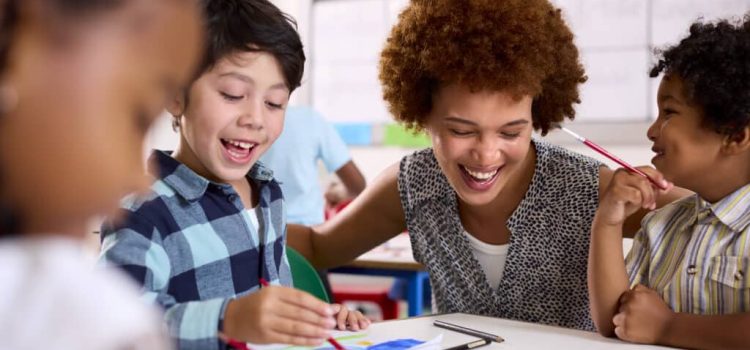
Student Harmony: Nurturing Connection in Education
In the ever-evolving landscape of education, the challenge to keep students engaged has become more significant than ever. With the advent of technology, remote learning, and the myriad distractions available to today’s youth, educators find themselves searching for innovative ways to reignite the spark of curiosity in their students. In this guide, we explore five transformative tactics aimed at restoring student school engagement and creating an environment where students can truly thrive both academically and personally.
Personalized Learning Plans: Tailoring Education to Individual Needs
The traditional one-size-fits-all approach to education often leaves students feeling disengaged and disconnected from the learning process. Enter personalized learning plans – a pedagogical shift that tailors education to individual needs, interests, and pace. In this tactic, educators become facilitators of customized learning experiences, leveraging technology and adaptive learning tools.
Personalized learning plans acknowledge the diverse strengths and learning styles of students. By utilizing diagnostic assessments and understanding each student’s preferences, educators can create tailored curricula that resonate with individual learners. This not only addresses gaps in understanding but also allows students to progress at their own pace, fostering a sense of autonomy and mastery over their learning journey.
The integration of technology plays a pivotal role in executing personalized learning plans. Adaptive learning platforms, interactive simulations, and virtual learning environments provide students with dynamic, tailored experiences that make the educational process more engaging and relevant to their lives.

Project-Based Learning: Making Education Relevant and Exciting
One of the most effective ways to restore student engagement is through project-based learning (PBL). This tactic bridges the gap between theoretical knowledge and real-world application, offering students a chance to actively explore and solve problems. Project-based learning not only makes education more relevant but also sparks genuine enthusiasm for learning.
In a project-based learning environment, students take on active roles as investigators and problem solvers. Rather than passively absorbing information, they apply knowledge to authentic scenarios, fostering a deeper understanding of the subject matter. The sense of accomplishment derived from completing a tangible project enhances motivation and self-efficacy, key components of sustained engagement.
Educators play a crucial role in designing and guiding these projects. By aligning them with curriculum objectives and incorporating students’ interests, educators can strike a balance between structured learning and individual exploration. Project-based learning not only addresses the need for relevance in education but also instills a lifelong love for learning.
Fostering a Positive Learning Environment: The Key to Student Well-Being
A positive learning environment is the bedrock upon which student engagement flourishes. This tactic goes beyond academic considerations to prioritize the overall well-being of students. In a positive learning environment, students feel safe, supported, and motivated to actively participate in the learning process.
Creating a positive learning environment involves various elements, including the physical classroom space, the tone set by educators, and the interactions among students. Inclusivity, respect, and recognition of achievements are essential components. When students feel seen and valued, they are more likely to engage in class discussions, ask questions, and contribute to group activities.
Additionally, fostering a positive learning environment requires addressing social and emotional aspects. Incorporating mindfulness practices, encouraging peer support networks, and providing outlets for creative expression contribute to a holistic approach that enhances overall student well-being.
Integrating Technology: Harnessing Tools for Modern Engagement
In an era dominated by technology, integrating it into the classroom is not just a necessity but an opportunity to enhance student engagement. This tactic goes beyond using technology for its own sake; it’s about leveraging digital tools to make learning more interactive, collaborative, and tailored to the needs of today’s tech-savvy students.
Interactive whiteboards, educational apps, virtual reality experiences, and online collaborative platforms are just a few examples of technology integration. These tools bring lessons to life, catering to different learning styles and capturing students’ attention in ways traditional methods might not. Gamification, for instance, turns learning into a more engaging and enjoyable experience, tapping into students’ intrinsic motivation.
Moreover, technology facilitates instant feedback, allowing educators to assess students’ progress in real-time. Adaptive learning platforms adjust difficulty levels based on individual performance, ensuring that each student is appropriately challenged. By embracing technology, educators can create a learning environment that aligns with the expectations and preferences of today’s digitally fluent generation.
Encouraging Student Voice and Choice: Empowering the Learners
Students thrive when they feel their opinions matter, and their voices are heard. The tactic of encouraging student voice and choice empowers students by giving them a say in their education. When students have a sense of agency, they become more invested in their learning journey.
This tactic involves providing opportunities for students to make decisions about their education. This can range from choosing project topics and deciding on the format of assessments to participating in the creation of classroom rules. By involving students in decision-making processes, educators cultivate a sense of ownership and responsibility, fostering a positive attitude towards learning.
Moreover, encouraging student voice and choice acknowledges the diverse interests and strengths of each individual. When students have the freedom to explore topics that resonate with them, they are more likely to engage deeply with the material. This tactic not only enhances motivation but also instills crucial skills such as critical thinking, problem-solving, and self-regulation.










